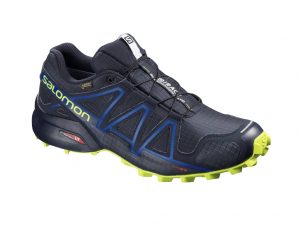 There are many tracks and forest trails that you can do just fine with standard running shoes.
There are many tracks and forest trails that you can do just fine with standard running shoes.
But as trails become softer, wetter, more slippery, irregular or just more technical, you will run into the shortcomings of a regular running shoe and find that a good trail shoe offers a number of advantages. This is mainly based on three elements:
- Grip
- Stability
- Protection
We’ll first take a look at shoes in for a number of specific trail types:
- Light / moderate trails
- Technical / mountain trails
- Snow and ice
- Soft surface vs hard dry trails
In addition, we’ll also be looking at a number of trail running specific considerations that are important when choosing the perfect shoe for you.
- Water resistance
- Attenuation / Cushioning
- Heel-drop
- Insole
- Advice
Trailrun specific properties
Grip
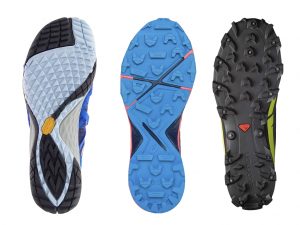 If forest trails really get wetter you are going to notice it, on your regular shoe you will slip just a bit earlier, you’ll start making your strides a bit smaller and run more carefully. You will run less efficiently. If you are going run on sand, or soil or rocks, a good grippy sole is even more important. And that grippiness is not only dependent on in a pronounced or deep tred (Oftemtimes the most recognizable part of a trail running shoe), but also on the rubber compound that is used.
If forest trails really get wetter you are going to notice it, on your regular shoe you will slip just a bit earlier, you’ll start making your strides a bit smaller and run more carefully. You will run less efficiently. If you are going run on sand, or soil or rocks, a good grippy sole is even more important. And that grippiness is not only dependent on in a pronounced or deep tred (Oftemtimes the most recognizable part of a trail running shoe), but also on the rubber compound that is used.
Stability
The more irregularities in the trail, the more stability you need from your shoes. You do not want too much rotation of your foot because that will put a lot of pressure on your ankles, your knees and just increase the risk of minor accidents. Because you often adjust and vary the length of your step to the terrain (your stride is not a fixed and repetitive as on the road) the way in which the sole handles pronation is less important than with road shoes.
Protection
Rocks, hard and sometimes sharp, can easily damage your shoes and also cause injuries to your toes, for example. That’s why trail shoes are often made of strong materials and you might see extra protection, especially on the front of the shoes with harder plastic panels to avoid damage or tearing to the material of the shoe.
These are all ways in which trail running shoes differ from regular running shoes and where the specific requirements that trails make to a shoe are answered. There are roughly three segments in trail running shoes that you can choose between. It is important to consider carefully what kind of trails you will mainly run with the shoe.
Trails en ondergrond
Light / moderately technical trails
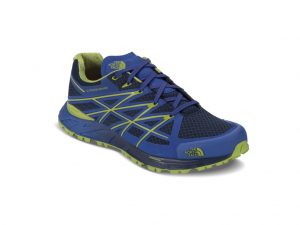
These are the trails you could run with regular running shoes. But where you will also notice that the running shoe is coming u a bit short. Think of forest trails, unpaved / gravel roads, a bit more rocky hills. The shoes are still relatively smooth and lightly manufactured and offer a light degree of protection for your feet. The profile is deeper than with the regular running shoes to give grip on somewhat softer and more irregular surfaces.
Technical / mountain trails
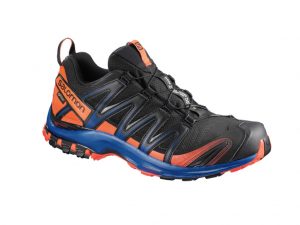
Here we are talking about really difficult trails, with many irregularities such as rocks and stones. If you go higher and find yourself running trails between the mountain tops, stability, grip on stone and watertightness are of great importance. These shoes are often even more robust to protect your feet against all irregularities on the trail.
In addition to this rough division, it is also recommended to think about what kind of surfaces you want to run.
Snow and ice:
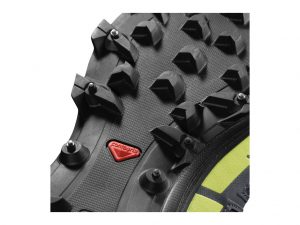
There is a category of shoes that is more specifically aimed at providing grip in snow and icy conditions. With specifically positioned spikes on the sole and just a bit more insulation in the shoe to provide more warmth to your toes.
Soft surface vs hard dry trails
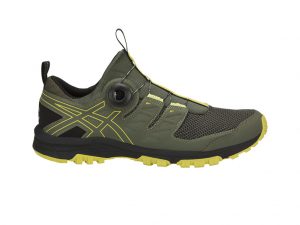
Also think carefully about what type of surface you expect to run. Is it softer, like forest or sandy soil, or hard baked clay-like surfaces as you would encounter in southern France, Italy or Spain. In one case shoes with less cushioning and especially a deeper profile are a good choice, in the second case you may need more cushioning and certainly less profile. If you expect to have to manage have a lot of stones, rocks, and boulders, the rubber compound is important. Some often softer rubber types will stick more to stone than other harder compounds.
Waterproofness
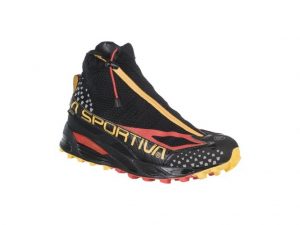
The moment you get off the road and hit the trails, you will often encounter moister and often wet terrain. Grass and shrubs stay wet longer even after the rain and if you run through them, your shoes can get pretty wet. In the mountains you encounter streams or rivers that you have to pass over or through; in these circumstances it is definitely worth taking a waterproof shoe; in many trail running shoes, for example, there is a GoreTex membrane; if GTX is in the name of the shoe, then it is a shoe with GoreTex.
Cushioning
Opinions and insights differ a lot on the matter of cushioning. From thick soft soles with a lot of cushioning, to so-called barefoot soles that give minimal cushioning and support. Where in the first case the shoe supports and provides protection, the philosophy of a barefoot shoe is that the foot itself becomes stronger by giving it less support. It is important that when you first go running with this latter type of shoes, you increase the distance of your runs step by step so that your foot can get used to what is asked of the foot.

In terms of cushioning a broad spectrum is possible, from barefoot, very minimal, to moderate and heavy and deep cushioning. Less of it provides you with a more direct feel of the trail, but can be heavier on your joints. More cushioning can cause your legs to tire less quickly, but can also reduce contact with the trail and opponents of a lot of cushioning call out the less efficient step in shoes with a lot of cushioning.
Heel-drop
Last but not least, heel-drop is something to be reckoned with, or at least to be aware of. What is heel-drop? That is the difference in height between your heel and the forefoot. It is decisive for the position of your foot, at least the angle at which you are running, and how your foot comes down. You can check-out what you are used to in your regular (running) shoes and if you are going to run with a significantly different drop, once again, ease into it and give your feet and legs, time to get used to the new angle you are running.
Insole
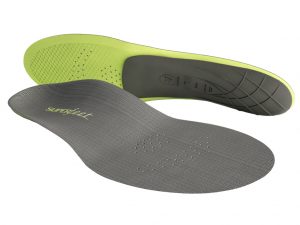
Related to the angle of your foot is the possible use of insoles. Most shoes have a sock liner, but usually, it is no more than a fairly thin and soft layer that does not do more than protect your socks or feet against the inside of the sole. An insole can provide extra reinforcement and stability, for your foot and thus for the way you run.
Advice
Which shoe you will buy, depends very much on what you like and what fits your foot (obviously). It is essential to gather some good advice on trail running shoes at a running specialty store. There the retailer can help you find a shoe with an ideal fit for you. Which is ultimately the most important thing. A shoe that fits the dimensions, shape and volume of your foot. The foot is a hugely complex device, with 26 separate bones, 33 joints, 107 ligaments and 19 muscles and tendons. So finding the perfect shoe for that, requires you to put enough time and effort into it and ask the right questions (which we hope to have provided you with through this GearGuide.)
When listening to advice just a side note: In some specialty stores, there will be sellers who do not believe in the usefulness of a trail-specific shoe. These are often experienced runners who always run everything with their regular shoes, and can sometimes be somewhat biased from personal experience and conviction. Hopefully, once again, this GearGuide will help you with the right questions to find the shoe that suits you best.
